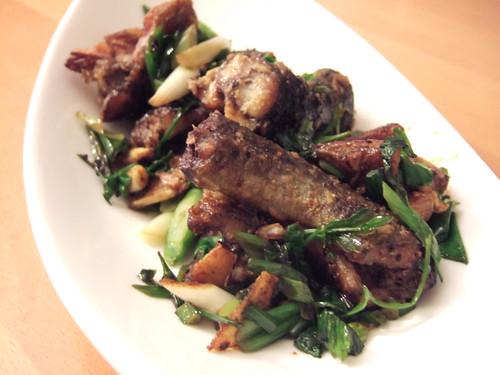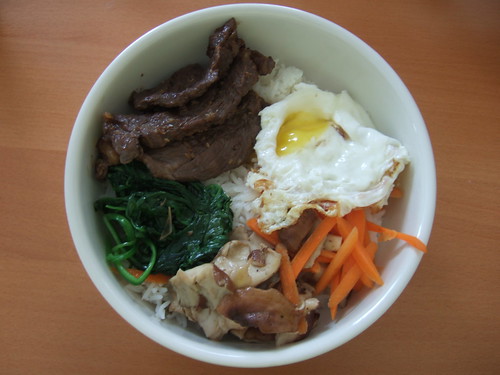I saw these slimy suckers swimming in a large tub in Chinatown when the Dr. and I met up to buy groceries. Can we buy that? I asked. What are you going to do with it? The Dr. wanted to know, even though my asking does not really mean anything. I was already signaling to the lady behind the counter to get me one. It cost about $5.50 for one, cleaned, but head intact.
Back at home, the eel was washed with salt and water because it was so slimy. We chopped it up in four pieces–a sharp knife was needed as the spine was pretty tough. The Dr. thought braising it in tomato paste would be ideal, but since I didn’t have it available, we just coated it in salted flour. We threw it in hot oil with some chives and scallions and the snake-like critter made some good eatin’! The meat was tender, and no kidding, tasted just like chicken.
Ingredients:
1 yellow eel, cleaned, chopped in 4
3 stalks of scallions, roughly chopped
2 stalks of chives, roughly chopped
1/4 cup of flour
chili flakes
lemon juice
oil, salt, pepper1. Combine flour, salt, pepper and chili in a small bowl. Coat the eel pieces evenly.
2. In a deep sauce pot, heat some oil and sauté the leeks and chives for 1 minute. Remove immediately to a paper towel-lined plate.
3. Then slowly drop the eel pieces. Fry until golden brown on all sides. Use tongs to make sure they are cooking evenly on both sides. Do not cover. Remove fried eel to the same plate when cooked.
Related post/s:
Deluxe Food Market has fresh eel
Creeped out by eels? Try octopus!






